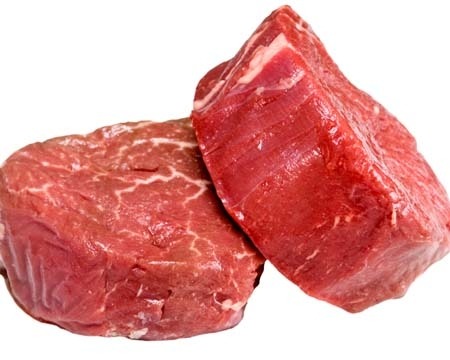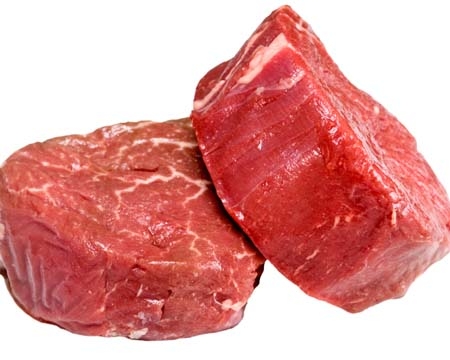How To Perfectly Grill Steak
A quintessential part of summer grilling, a perfectly cooked steak with that charred, slightly smoky exterior and juicy, tender meat makes any meal complete. The best part is they're easy to cook and are incredibly satisfying. Plus, they can be prepared simply with salt and pepper, topped with salsas, or marinated in a chimichurri sauce or a variety of flavors. Using a good quality piece of meat is a large factor in the outcome of the dish, but even if you have the most beautiful cut of meat, you can completely destroy it by overcooking it. And then all those lovely marinades, salsas, and side dishes will have nothing to pair with.
Avoid this catastrophe by following these easy steps and tips: Chef Smith of Stephen Starr's Steak 954 in Florida, shares his go-to technique for perfectly grilling a steak.
What should the perfect steak look like? According to Smith, it should taste like beef, have a good texture that's not too firm but not too soft either. Generally a thick cut works well with lots of marbling (marbling is the fat that's dispersed throughout the meat); this provides it with the juiciness, so look for evenly distributed fat instead of just clumps. Smith provides some basic tips on grilling from the seasoning to the feel of the meat, so you never have to fear for your steak again.
At home, Smith veers toward skirt steak because it provides good marbling inside the meat and not just fat, plus it's usually a good price. But rib eyes are also a great option. (Photo courtesy of Istock/stu99)
For good-quality steaks that don't need to be marinated (like rib eyes), Smith recommends seasoning them heavily with salt and pepper immediately before grilling. If you do it for longer, it will draw out the moisture. How much salt? Smith says that his steaks are white when they go on the grill because most of the salt falls off anyway. However, for cuts like strip steak that benefit from some marinating time, he usually uses a chimichurri (minus the vinegar/acid for the marinade, but then adding it to the half of the sauce that he uses to top the steaks). A lot of times he mops on a sweet BBQ sauce when the steak is almost done cooking, so the sugars caramelize instead of burn (which happens if you put it on the grill for too long). Or he adds a dollop of sriracha for extra heat.
Check out these 10 Great Meat Marinades.
While a wood-burning grill is best, it can be difficult to regulate the heat on them. He recommends that home cooks use a gas grill so that they can keep it at a steady medium-high heat — this will also give the steaks a good brown crust.
Every grill is different, so make sure that you are familiar with the intensity and heat of your grill. Test it out by holding your hands over the grates to see how hot it is and make sure to remember where the cool spots are. Smith recommends cooking over medium-high heat.
Check Out: 8 Grilling Slip-Ups and How to Fix Them
Feeling the Meat
He likes to test the firmness of the raw meat before it goes on the grill and after. What's he looking for? The meat shouldn't be firm, but it should have less bounce than before. Steaks with more bounce are on the rare side, while firmer steaks will be well done. It's up to you how you like to eat your steak, but most are better when on the medium rare side.
Moving the Meat Around
Some people claim that you should just let the steak cook on each side and not move them around until they need to be turned — Smith disagrees. He says that moving the steaks around gives them more char and essentially more flavor on the exterior crust, but that you need to make sure to strategically move them around the grill so that they don't get caught in a flareup (when the fat/grease drips through the grates), otherwise you'll get more of a burnt taste on the exterior, than the flavorful crust you're looking for. You can use tongs to move them around, just be careful not to pierce the meat or you'll lose some of the precious juices.
[Editor's Note: For thick, fatty cuts like rib eye, make sure to grill the steak on all sides so that it cooks evenly and burns off some of the extra fat.]
Don't Walk Away
Grilling is a time to bond with your food. Grab a beer or a glass of wine and be prepared to hang out with your steak as you dance it around the grill.
The cooking time depends on the cut and thickness of the steak. Chef recommends about 10 minutes per side for a rib eye that's 1 ¼-inch thick, while a skirt steak takes about 3-4 minutes per side for medium rare, depending on the thickness. However, you can always avoid cutting into the steak and the guessing game by using a meat thermometer (something we highly recommend). That way, you can cook until your desired internal temperature (between 130-135 degrees for medium rare, 140-145 degrees for medium). Check out this guide to internal meat temperatures.
Make sure to rest the meat for about 5-7 minutes, depending on the thickness (thicker steaks should be on the higher end of the range). It's important not to tent the meat or it will continue to cook. Just keep on a cool spot on the grill so you can quickly heat it up again before you serve it (a trick that he uses at the restaurant).






